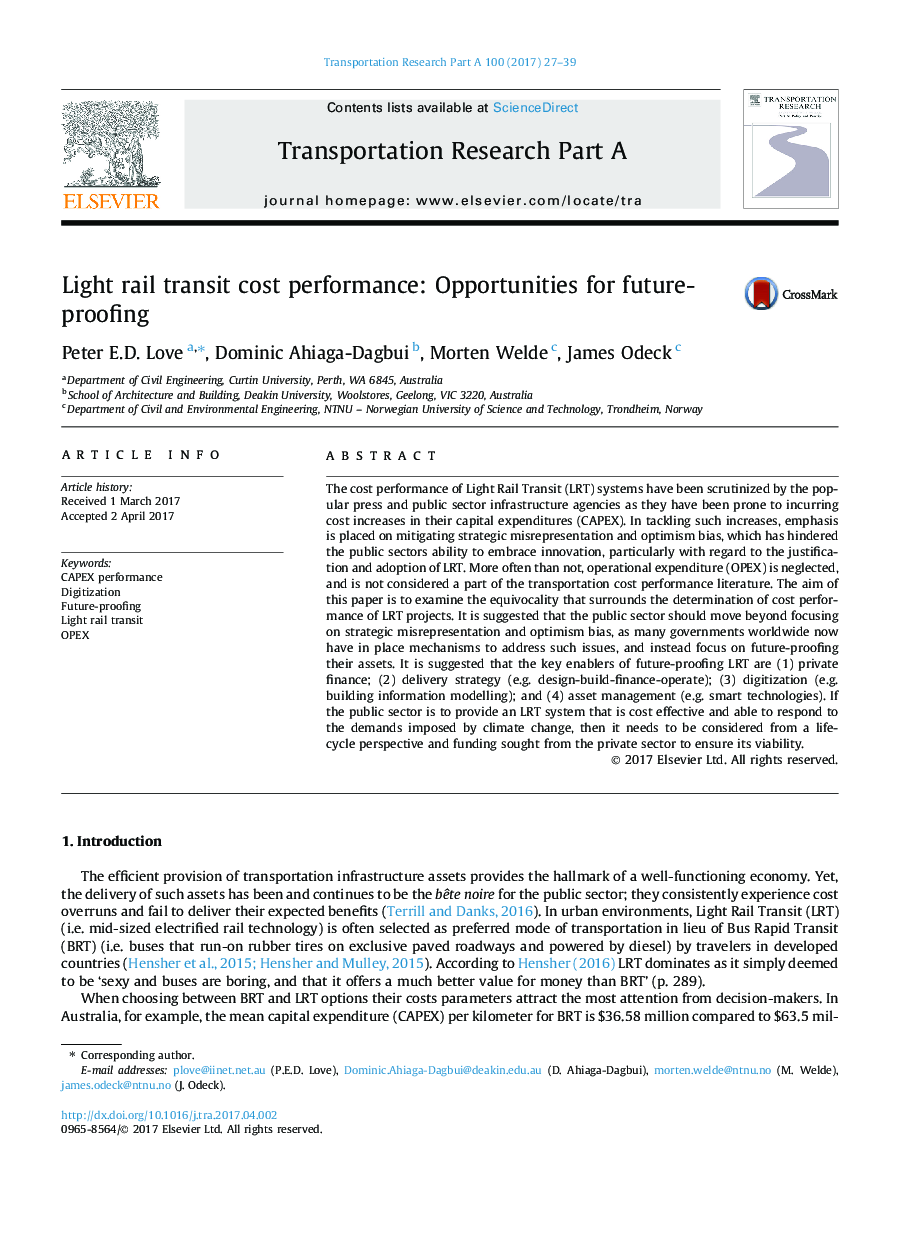| Article ID | Journal | Published Year | Pages | File Type |
|---|---|---|---|---|
| 4928959 | Transportation Research Part A: Policy and Practice | 2017 | 13 Pages |
Abstract
The cost performance of Light Rail Transit (LRT) systems have been scrutinized by the popular press and public sector infrastructure agencies as they have been prone to incurring cost increases in their capital expenditures (CAPEX). In tackling such increases, emphasis is placed on mitigating strategic misrepresentation and optimism bias, which has hindered the public sectors ability to embrace innovation, particularly with regard to the justification and adoption of LRT. More often than not, operational expenditure (OPEX) is neglected, and is not considered a part of the transportation cost performance literature. The aim of this paper is to examine the equivocality that surrounds the determination of cost performance of LRT projects. It is suggested that the public sector should move beyond focusing on strategic misrepresentation and optimism bias, as many governments worldwide now have in place mechanisms to address such issues, and instead focus on future-proofing their assets. It is suggested that the key enablers of future-proofing LRT are (1) private finance; (2) delivery strategy (e.g. design-build-finance-operate); (3) digitization (e.g. building information modelling); and (4) asset management (e.g. smart technologies). If the public sector is to provide an LRT system that is cost effective and able to respond to the demands imposed by climate change, then it needs to be considered from a life-cycle perspective and funding sought from the private sector to ensure its viability.
Keywords
Related Topics
Physical Sciences and Engineering
Engineering
Civil and Structural Engineering
Authors
Peter E.D. Love, Dominic Ahiaga-Dagbui, Morten Welde, James Odeck,
